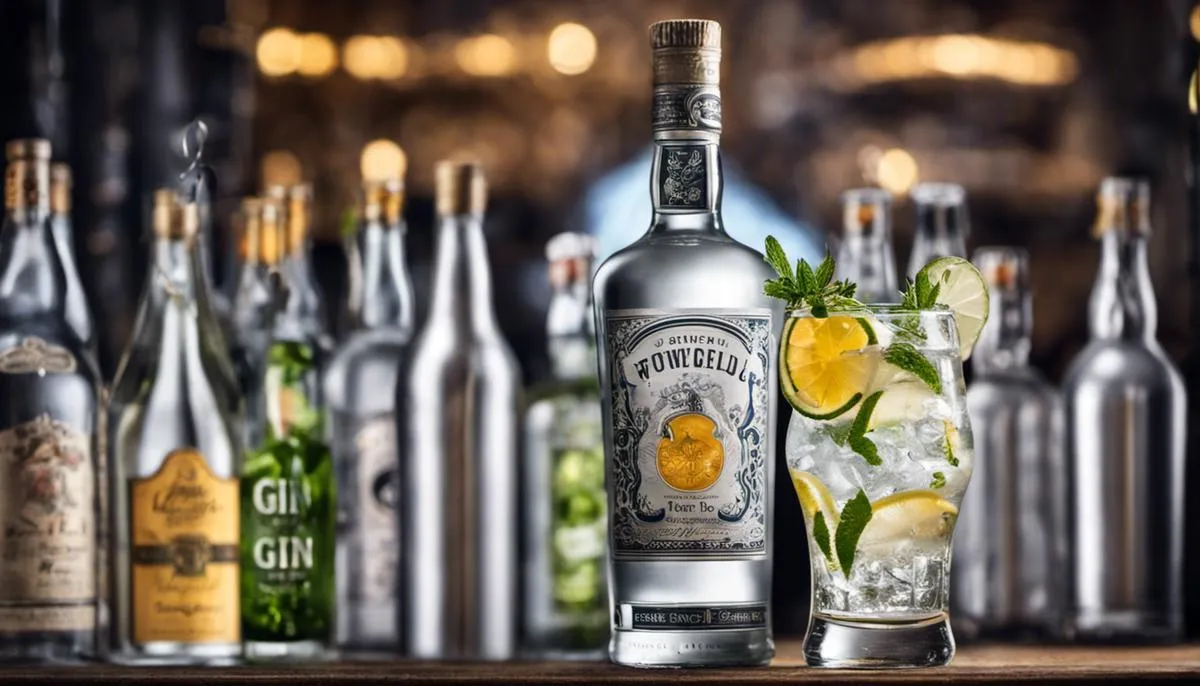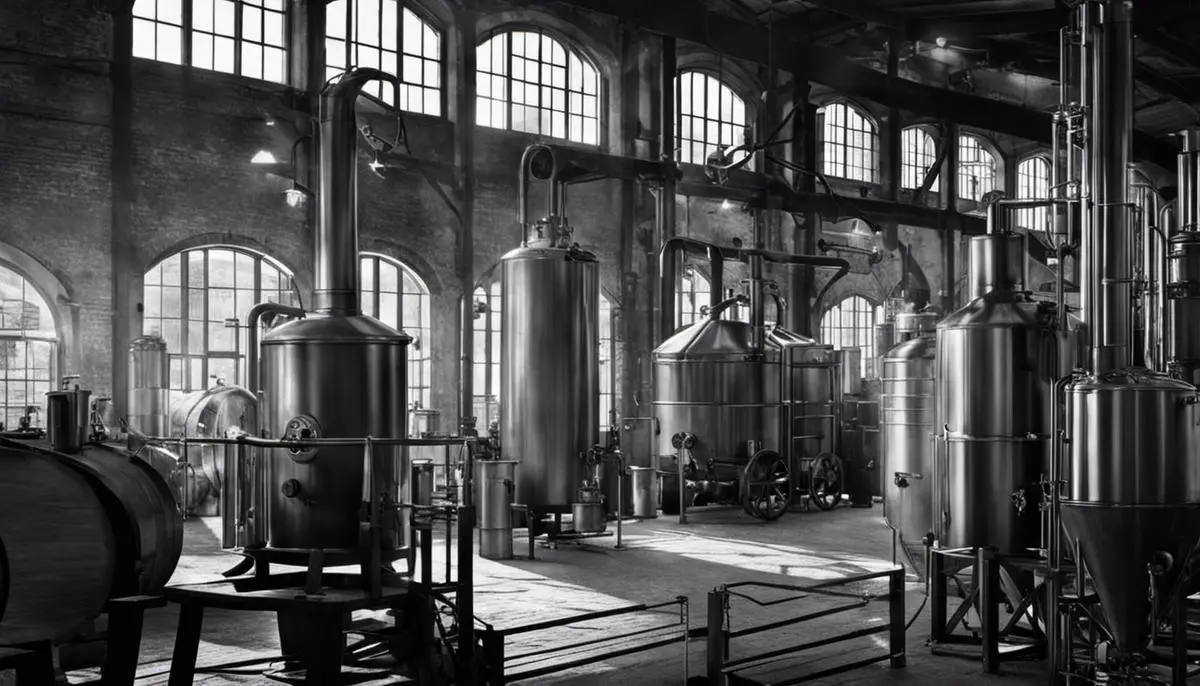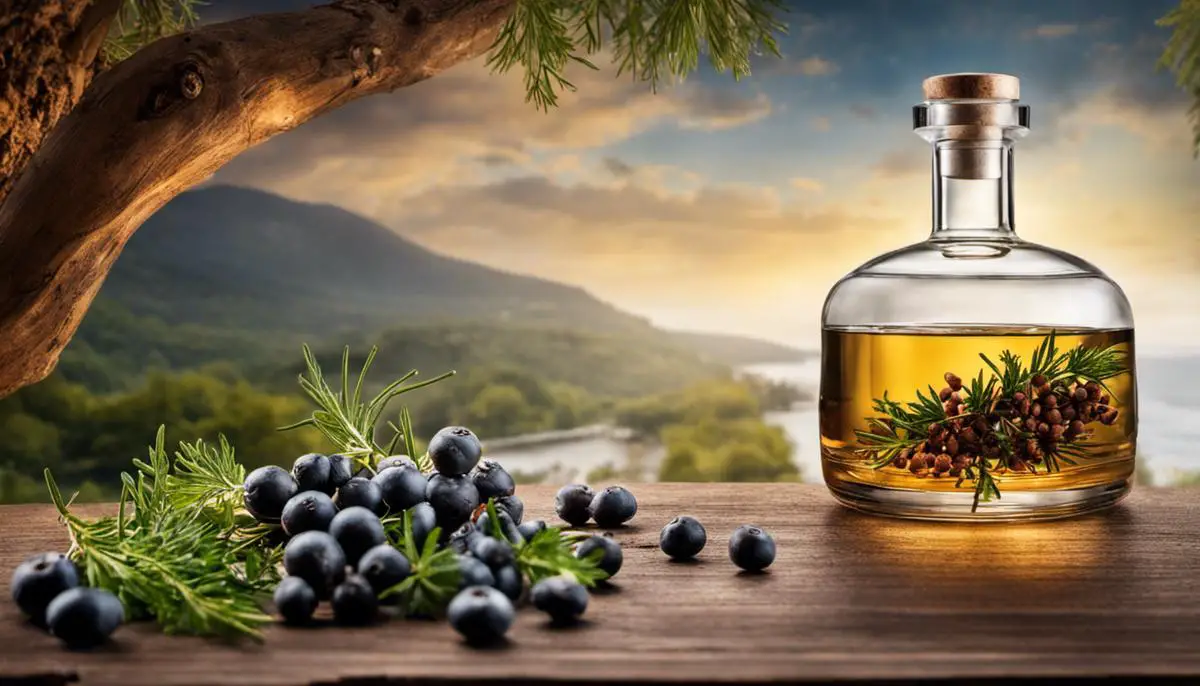In the iconic words of H.L. Mencken, the martini is “the only American invention as perfect as a sonnet,” an ode to simple sophistication in a glass. Particularly, the gin martini stands out, a testament to times gone by, yet brimming with versatility that keeps it in the modern narrative. This fascination begins with a journey back in time, tracing the origins and evolution of the gin martini. Along the way, we’ll delve into the different types of gin that serve as the lifeblood of this classic cocktail. We, then, seamlessly transition to the skill of alchemy, mastering the craft of mixing the perfect gin martini. Finally, we embrace the spirit of creativity, exploring variations and personalizations to make your martini uniquely yours.
History and Origins of Gin Martinis
Start of the Gin Martinis
The gin martini, a classic cocktail of extraordinary renown, has a murky yet intriguing history. The origins of the gin martini are believed to be closely tied to the Martinez, a cocktail that was popular in the mid to late 1800’s in the United States. The Martinez predominantly consisted of gin, sweet vermouth, maraschino, and orange bitters. As the story goes, the modern gin martini evolved from this sweet concoction, gradually transitioning to a much drier version that is characterized today by the use of dry vermouth in place of the sweet.
Evolution of Gin Martini
The transformation of the gin martini arguably reaches a pivotal moment in the late 1800s when the legendary bartender, Julio Richelieu, in Martinez, California, ostensibly concocted the first ‘dry’ martini for a gold miner. The dryness in martini pertains to using less vermouth and more gin. Through the 20th Century, the length of gin increased and the alignment of vermouth in the martini cocktail diminished. Today, a dry martini indicates a cocktail where the ratio of gin to vermouth is significantly higher.
The Prohibition and Gin Martinis
The prohibition era in the U.S, spanning from 1920 to 1933, fuelled a shift in the gin martini’s profile. This period, characterized by the banning of manufacture, sales, and transportation of alcoholic beverages, saw the rise of ‘bathtub gin.’ In an effort to improve the harsh, homemade taste of this bathtub gin, the use of vermouth and other mixers grew in popularity, giving way to a proliferation of gin cocktail recipes, among them, the gin martini.
Popularization of Gin Martinis
The middle of the 20th century heralded a new level of popularity for gin martinis. This was fuelled in part by the embrace of the cocktail by notable figures of the time. From Ernest Hemingway, who declared that he had never tasted anything so cool and clean, to President Franklin D. Roosevelt, whose fondness for the drink was well documented. In Hollywood, the martini-shaking British Secret Service agent, James Bond, furthered the drink’s sophisticated and cool image.
Contemporary Gin Martinis
In recent years, gin martini’s popularity has experienced a resurgence, thanks to the craft cocktail movement and renewed interest in classic cocktails. While the gin to vermouth ratio continues to be a subject of personal preference, most bartenders and connoisseurs would agree that a quality gin and a hint of vermouth, stirred with ice, strained, and garnished with a lemon twist or an olive, creates a classic gin martini.
The tale of the gin martini, affectionately hailed as the quintessential cocktail, beautifully epitomizes the enduring appeal of a well-crafted drink. Unfazed by changing tastes and passing trends, this timeless cocktail continues to captivate with its elegance and sophistication, delighting generations of cocktail aficionados.
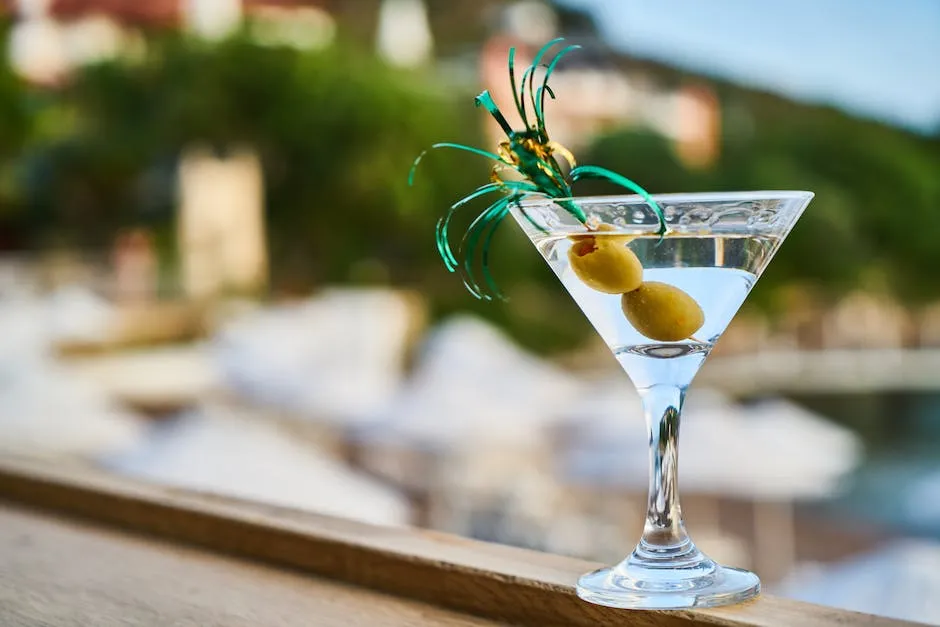
Ingredients and Types of Gin for Martinis
What Goes Into a Classic Gin Martini?
The revered gin martini, often crowned the apex of all cocktails, requires just a handful of simple ingredients: gin and dry vermouth, typically accompanied by a garnish – a lemon twist or an olive. Ice serves a dual purpose; while crucial for chilling the spirits, it gently dilutes them to a pleasantly sippable potency. Though the ratio of gin to vermouth can be adapted to individual taste, 5:1 or 6:1 is generally considered the golden ratio.
London Dry Gin
One of the most traditional types of gin used in a martini is London Dry Gin. Notable brands include Beefeater, Bombay Sapphire, and Tanqueray. As the name implies, this type of gin has a drier taste profile compared to its counterparts, being less sweet. It is highly distilled and has predominant flavors of juniper berries, alongside other botanicals like coriander and angelica root. The impact of London Dry Gin on a martini is to render it classic, crisp, with a piney, slightly citrusy flavor.
Plymouth Gin
Plymouth Gin is another traditional choice for a gin martini. Originating from a single distillery in Plymouth, England, this gin has a Protected Geographical Status, much in the same way Champagne does in France. As such, its flavor profile is distinctly different from a London Dry, being slightly fruitier and less juniper-forward. When utilized in a martini, Plymouth Gin offers a gentle smoothness, making for a well-rounded, subtly sweet, and full-bodied cocktail.
American Craft Gins
Over the years, American craft gins have carved out their desirable space in the gin martini world. These gins can vary tremendously between distilleries as they experiment with unique and local botanicals, making them less predictable in flavor than the London Dry or Plymouth. Nevertheless, they often provide complexity with a mix of traditional juniper flavor and exciting new dimensions, depending on the herbs and botanicals used. Gins such as Aviation American Gin or St. George Spirits Botanivore Gin can create flavorful and complex martinis, providing a delightful twist to the traditional rendition.
The Essence of Gin in a Martini
Understanding the paramount role that gin plays in a martini requires recognizing that it is not just a cocktail, but a delicate balance of gin and vermouth, with the occasional garnish complimenting the main act. The standout character of a martini is largely determined by the type of gin used. A London Dry leads to a bold, classic martini, while a Plymouth creates a soft, subtly sweet variant. An American craft gin, meanwhile, takes the flavor profile to an adventurous arena. To find your martini’s perfect match, experimenting with different types of gin is highly recommended.

The Craft of Mixing a Gin Martini
Forging Your Classic Gin Martini
A classic gin martini is the result of the unison of three key elements: gin, dry vermouth, and a garnish like an olive or lemon twist. The starting point for many is a 2:1 ratio of gin to vermouth, which delivers a surprisingly dry yet full of flavor martini. However, more orthodox martinis enthusiasts might advocate for narrower proportions, as steep as 5:1 or 6:1. Remember, personal preference is the ultimate decider in mixology. A softened 2:1 ratio is generally more agreeable, especially for those flickering their relationship with gin.
The Stirring Technique
The stirring technique plays a vital role in creating a perfectly blended gin martini. Rather than shaking as you might for other mixed drinks, a martini requires a more delicate touch. You can use a bar spoon to stir the drink in a circular motion, aiming for around 30 revolutions. This method also helps avoid diluting the drink too much and damaging its character, as shaking tends do to. Shaking also clouds the drink, whereas stirring maintains its clarity.
Choosing High Quality Ice
Good quality ice is another often-overlooked aspect of gin martini making. The ideal is to use pure, hard ice made from filtered water. This pure ice will melt more slowly and therefore dilute your martini less. Some cocktail aficionados also prefer to ‘wash’ their ice before using it – this simply means running it under cold water briefly to remove any external impurities.
The Ideal Serve
Even the manner in which you serve a gin martini has an impact on the overall experience. The martini should be served in a chilled glass to help maintain the temperature of the cocktail, as the gin and vermouth are best enjoyed cold. Furthermore, the choice of garnish can impact the final flavor of the drink. The traditional olive adds a hint of savory, salty depth, while a twist of lemon peel can offer a touch of acidic brightness. Some may also opt for a cocktail onion, creating what is known as a Gibson Martini.
Gin Martini Mastery
Acquiring proficiency in the basics of gin martini making can lead to exciting possibilities. Experimentation becomes the name of the game with the endless types of gin to choose from, the proportion variations to test, and the array of unique vermouths to sample. It’s important to note that each modification will transform the final taste of your cocktail. Don’t hesitate to dive into the world of boutique gins, designed with diverse botanical profiles to invigorate your palate. Crafting a gin martini is a masterful blend of art and science – striking that perfect harmony of flavors, textures and temperatures for a rejuvenating and impressive cocktail.
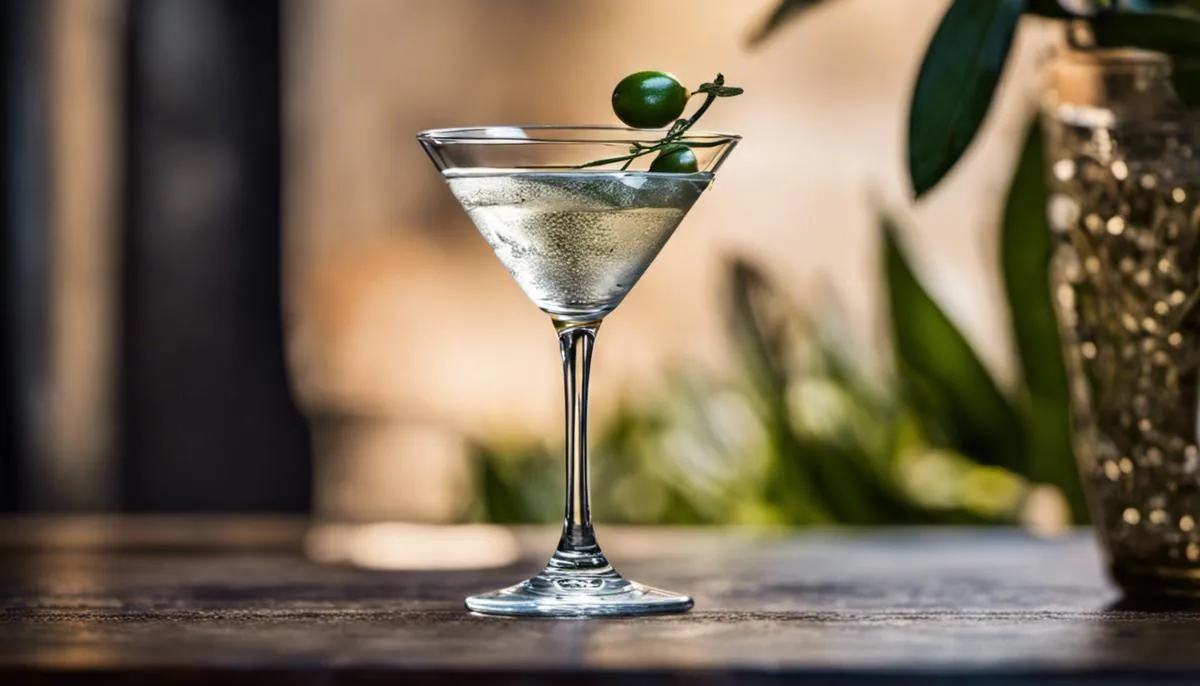
Variations and Personalizations
Unveiling the Gin Martini Variations
Classic gin martini, revered for its simplicity and sophistication, rests primarily on two pillars – gin and vermouth, tastefully garnished with an olive or a lemon twist. However, the journey doesn’t end there. Numerous variations of this timeless drink beckon, either through subtle tweaking of these mainstays or by ushering in novel ingredients.
The Dirty Martini
A common variant of the classic gin martini is the Dirty Martini. In this version, olive brine is added to the drink along with the gin and vermouth. The brine adds a unique salty and pickled flavour to the drink, while also making it ‘dirty’. This variation often increases the amount of olive garnish, sometimes skewering multiple olives or using stuffed olives for additional flavor.
The Dry Martini
The Dry Martini is another popular version of the gin martini. The dryness of a martini is determined by the proportion of gin to vermouth. In a dry martini, the amount of vermouth is significantly reduced, sometimes even replaced with just a rinse of the glass or a light dash added to the gin. This results in a stiffer, more robust drink in which the intense flavor of the gin shines.
Garnishing a Gin Martini
Garnishing is one way to add a personal touch to your gin martini. The popular options are olives and lemon twists, with certain variants recommending specific types of each. Lemon twists offer a clean, citrusy note while olives provide a briny, savory flavor. The choice between them can greatly affect the overall profile of the drink. Other exotic garnishes like pickled onions or a strip of cucumber for a Hendrick’s martini are also sometimes used.
Experimenting with Additives
Several exciting gin martini variations involve the addition of other ingredients. The Gibson, for instance, is essentially a classic gin martini but with a pickled onion in place of the olive or lemon twist. The Perfect Martini uses equal parts of sweet and dry vermouth along with the gin, giving it a slightly sweeter taste profile. Other ingredients like elderflower liqueur, orange bitters, or aromatic herbs can be added for a unique, personalized touch.
Different Gins, Different Martinis
Finally, the type of gin used can greatly influence the taste and character of your martini. Different gins have varying botanical profiles, altering the flavor of the cocktail. For example, using a London dry gin will yield a drier, juniper-heavy martini, while an Old Tom gin will give a slightly sweeter taste. Experimenting with different brands and styles of gin is a great way to discover your personal favorite gin martini variant.
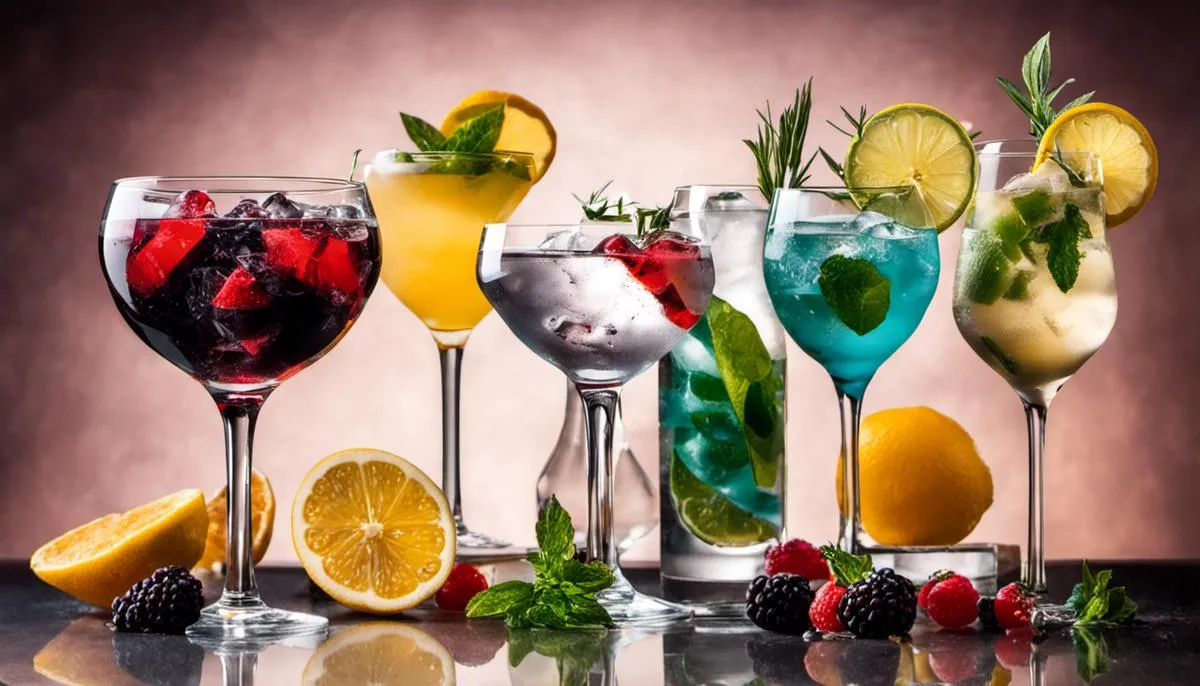
The gin martini, with its historic roots and ordered elegance, symbolizes not just a drink but a whole culture. As we’ve learned, it embodies the perfect balance between tradition and innovation, from the different types of gin that establish its base, to the skilled craft of assembling it impeccably, and finally, the personal touch that makes each martini distinctly memorable. Whether you prefer it shaken or stirred, dirty or dry, garnished with olives or a lemon twist, each gin martini tells a story—your story. So, here’s to the gin martini, an enduring symbol of refinement, a drink that easily adapts not only to our tastes but also to our stories which, like it, are timeless expressions of our individuality and taste.







